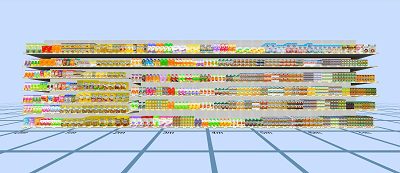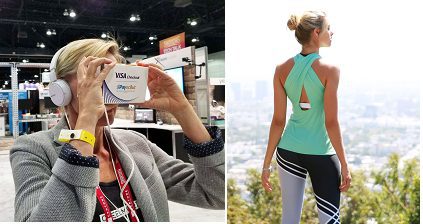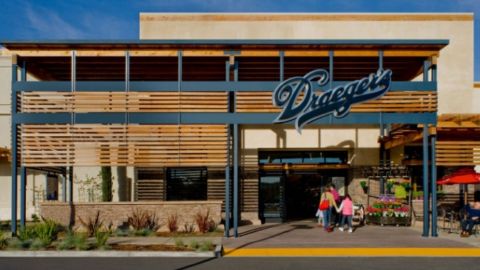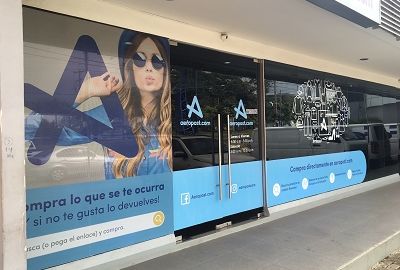Consumers faced with too many choices can easily become confused — and a confused customer is an unhappy (and unprofitable) customer. But how do retailers find that perfect balance, between ample choice and careful curation?
For organic baby food manufacturer Happy Family, consumer testing using virtual reality (VR) technology provided the actionable insights that its retail partners were seeking, delivered quickly and cost-effectively. Key benefits included:
- Fast speed-to-market: Only 3.5 months from initial idea inception to first presentation;
- Multiple scenario testing: Three different shelf set concepts, plus a baseline typical shelf set, were included in the testing process;
- Large volume of consumer test subjects: Each scenario was tested by 200 baby food purchasers, generating a total of 800 responses; and
- Realistic shopping experience: Test subjects could virtually pick up products, turn them over to read their labels and place them in a shopping cart.
Crowded Shelves Equal Confused Customers
The search for what constitutes the optimal shelf set has become particularly urgent in the baby food category, where the last decade has seen an explosion of new product types (including organic, non-GMO and vegetarian) as well as packaging innovations such as pouches. “Retailers have done as much as they can to get the right items on their shelf, but the category has gotten really cluttered,” said Riddhish Kankariya, VP of Strategy and Insights at Happy Family.
The company, which also makes adult snacks and beverages, was founded in 2006 and has grown to be the third-largest organic baby food supplier in the U.S., with $100 million in annual sales. Happy Family was recently acquired by global food giant Group Danone, but it remains a “small, start-up style brand,” said Kankariya. “We’re playing catch-up with the Gerbers of the world.”
To that end, Happy Family seeks to build relationships with retailers based on “data, analytics and insights,” said Kankariya. “How do you get innovation in front of retailers? You need a point of view and useful information for them to consider you, so we embarked on a journey to learn about the ‘pain points’ in this category from both retailers and their customers.”
Retailers large and small cited the plethora of products in this space as a consistent challenge. It isn’t just the sheer number of products but best to organize them that creates havoc. Products can be arranged by the age range of the child, but perhaps it makes more sense to group all the organic products together. Another option is to segregate products by packaging type, given that some parents will only buy baby food in jars, while others will be open to other options.
Virtual Reality Boosts Test Subject Volumes
Given the multiple factors in play and a lack of solid shopper data, Happy Family turned to virtual reality technologies from InContext Solutions. These interactive virtual displays allowed Happy Family to cost-effectively test several possible product layouts on large numbers of consumers.
“Working with InContext, we virtually created four different shelf sets,” Kankariya explained. “One was the existing typical layout and the other three were test scenarios, each one pivoting around the key questions in the landscape.” One organized products by age, another by packaging type, and a third looked at the impact of brand reduction, i.e. cutting the number of brands available on the shelf to determine the impact on buying behavior.
The test subjects, each equipped with a controller and a mouse, looked at a large screen (similar to a video game setup). They could virtually “walk the aisle,” reach out to pick up products, turn them around to read nutrition labels, and add them to a virtual shopping cart.
“This is a category where there’s a lot of concern about nutrition and ingredients,” explained Kankariya. “Everything needed to be very legible, and the colors needed to be very true. The consumer needed to feel like the product was green to believe that it had spinach inside the jar.”
The virtual setup allowed InContext to test 200 consumers for each layout scenario, for a total of 800 surveys. “We felt there was real quality in the data, and there were tons of comments and write-in feedback,” Kankariya reported. Even more remarkably, Happy Family and InContext accomplished all this within a 3.5-month period, from the initial idea’s inception to the first presentation.
Data Points Trump Gut Feelings
“With the results of this testing, we can go back to retailers with actual data,” he added. “For example, we can say that putting an item on a top shelf, out of the reach of some shoppers, will reduce its sales by 15%, while putting it on a bottom shelf will cut sales by 13%. Any buyer can use these data points, and they are a real number versus just a ‘gut feeling’ about product placement.”
While the testing yielded multiple takeaways, the biggest was that reducing the number of brands on the shelf, particularly in the organic category, would be beneficial to all parties.
“Consumers are open to switching and purchasing more organic items if they can understand the benefits, for instance if they can see the non-GMO label or the organic stamp on the product,” said Kankariya. “In addition, giving organics more space makes a bigger statement, which increases shoppers’ confidence in the product and their likelihood of purchasing it. It’s also important to have two to three facings of each product, because the more space that is devoted to a brand, the more the customer trusts it.”
Happy Family now has “a playbook that’s backed up with real numbers, real data and real consumer sentiment,” said Kankariya. The cost of the testing was “significantly more affordable” compared to assembling actual shelf sets and testing 800 consumers. “We got quality results without paying as much as we would have in the past,” he noted.
The company plans to expand its use of virtual testing to elements such as packaging designs, colors, product shapes and sizes. According to Kankariya, the ability to cost-effectively conduct tests with “significantly more respondents” than live focus groups will allow Happy Family to “tailor-make its testing to correspond with what we’re looking to find out.”













